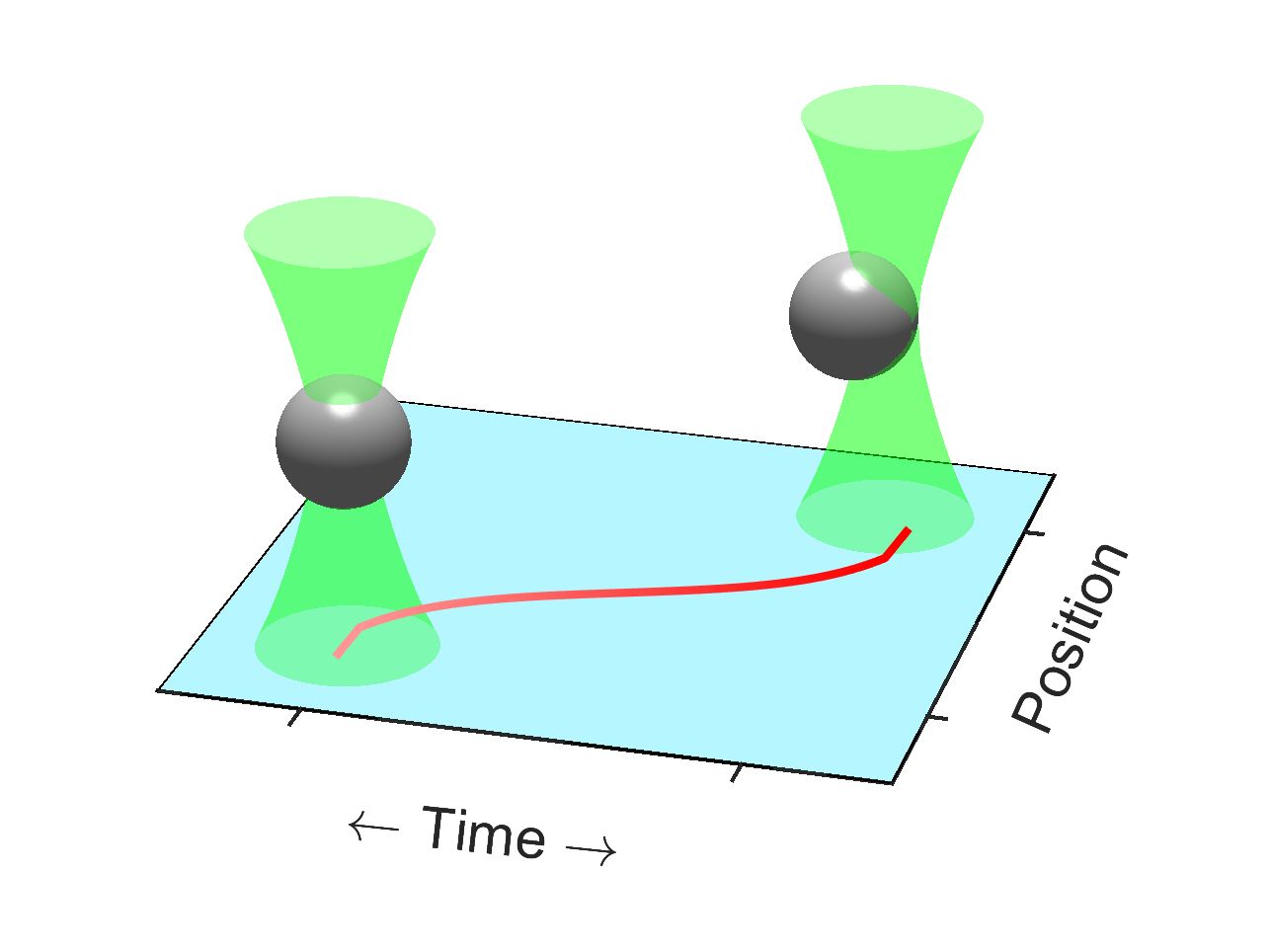
Mind the surrounding
ERC Advanced Grant of 2.5 million euros for Clemens Bechinger from the Department of Physics at the University of Konstanz – this is the second time the Konstanz physicist receives the prestigious research award.
The properties of tiny objects, for example a micromachine, a bacterium and even an atom, are strongly influenced by their environment. By contrast, the environment is often viewed as being independent of the object. However, if the object moves, the properties of the environment are changed. This leads to complex feedback mechanisms, which are also of interest in applications.
Imagine, for instance, a tiny engine operating in a liquid environment. The motor movement constantly exerts forces on the molecules of the liquid and thereby transfers energy to them. If the motor rotates only slowly, these excitations relax so rapidly that the properties of the environment are hardly affected and it thus remains in equilibrium. At higher speeds, however, the excitations become stronger and lead to long-lasting change in the liquid. Scientists then speak of a "non-equilibrium bath". Since the movement of the motor is highly dependent on the environment, this effect has a significant impact on the efficiency of the motor.
Non-equilibrium baths are by no means limited to liquids but also occur e.g. in quantum mechanical environments. If two metal surfaces are moved against each other in a vacuum at a distance of about one micrometre – that is one millionth of a metre – the vacuum fluctuations in the space between them are changed. Surprisingly, this leads to friction between the surfaces, even though they move without any contact and in a vacuum.
Brownian particles in non-equilibrium baths
The project "Brownian particles in non-equilibrium baths" (BRONEB) by Clemens Bechinger and his international team is about investigating the influence of viscoelastic and critical non-equilibrium baths on micrometre-sized particles. The research is not only of fundamental interest but also relevant for technical applications – for example energy-efficient transport processes, the rapid erasure of digital information and also research into new types of micromachines.
"We expect that many of the effects we observe are universal and can also be transferred to other non-equilibrium baths", Bechinger says. He is a professor in the Department of Physics and a member of the Collaborative Research Centre "Fluctuations and Nonlinearities in Classical and Quantum Matter beyond Equilibrium" (SFB 1432) and the Cluster of Excellence "Collective Behaviour" at the University of Konstanz. To implement the project, he received an Advanced Grant from the European Research Council (ERC) worth 2.5 million euros – already the second ERC Advanced Grant for the Konstanz physicist.
About the ERC Advanced Grant
The ERC Advanced Grant is one of the most prestigious and highly endowed European research awards. It recognizes and supports ambitious research projects by established scientists who have produced significant research achievements over a period of at least ten years. The funding period of the ERC Advanced Grants is five years; the maximum funding amount per research project is 2.5 million euros.
Key facts:
- Clemens Bechinger receives an ERC Advanced Grant of 2,5 million euros for his project "Brownian particles in non-equilibrium baths" (BRONEB)
- Research goal: Gain new knowledge for systems that are coupled to a non-equilibrium bath
- Clemens Bechinger is a professor in the Department of Physics at the University of Konstanz and a member of the Konstanz Cluster of Excellence "Collective Behaviour" and the CRC "Fluctuations and Nonlinearities in Classical and Quantum Matter beyond Equilibrium" (SFB 1432)
- Clemens Bechinger already received an ERC Advanced Grant in 2016 for the project "Active Suspensions with Controlled Interaction Rules" (ASCIR)
